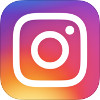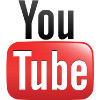 Pat sets the tone with a segment on high fidelity audio players and whether Neil Young’s new Pono device is as ‘righteous’ as its name claims. Darren reflects on popular misconceptions around sunscreen. Finally, Cristina tips-off with a segment about how some cutting edge technology called the Catapult GPS is being used in elite sports training.
Pat sets the tone with a segment on high fidelity audio players and whether Neil Young’s new Pono device is as ‘righteous’ as its name claims. Darren reflects on popular misconceptions around sunscreen. Finally, Cristina tips-off with a segment about how some cutting edge technology called the Catapult GPS is being used in elite sports training.
Download direct: mp3 file
If you like the show, please leave us a review on iTunes!
SHOW NOTES
High Fidelity Audio Players
Rolling Stone: Neil Young Pulls Catalog From Streaming Services
Wikipedia: Nyquist Shannon Sampling Theorem
Science Blogs: MP3 Listener Tests
Digital Music News: Why Pono Is The Worst Audio Player
Audacity Manual: Digital Sampling
The Guardian: Only A Man Pays For Music Quality He Can’t Hear
Neil Young’s Pono Player: The Emperor Has No Clothes
David Pogue Criticism Follow Up
XIPH: 24/192 Downloads and Why They Make No Sense
The Science Of Sample Rates: When Higher is Better and When it Isn’t
Mashable: iPhone High Res Audio Capabilities
Sunscreen Revisited
Catapult GPS
Toronto Star: Raptors + bioanalytics
Forbes: Aussie Tech Catapult GPS
ESPN: Florida State Use GPS Technology








I work in the audio industry and thought I’d weigh in on your audio player segment. Pat has worked with audio a lot and knows exactly what he’s talking about. The studies he cites do indeed prove that most people can’t tell the difference beyond a bit depth of 16, a sample rate of 44.1 ksps, or an mp3 stereo rate of 128 kbps. Of course, there is nothing wrong with having a fancy system, and some people can tell, though most of us aren’t as good as we think we are! Just for fun, I thought I’d fill in a little bit of detail on the topic.
In theory, it could be said that sampling rates higher than 44.1k (e.g. 48k, 96k or 192k) are better at reproducing information near the top of the range of normal human hearing, for two reasons. Reason number one has to do with the phase of the high frequencies. Most people can’t hear the difference but frequencies close to the Nyquist limit Pat mentioned (half the sample rate) get shifted in time relative to the others. Reason number two is that high sample rates can be parlayed into effectively greater bit depth in the post-filter. That is, an 88.2k 16 bit system can either reproduce frequencies up to 44.1 kHz, or, if the output is filtered at 20 kHz, it can perform as well as a 44.1k 17 bit system, all else being equal.
One place where bit depths beyond 16 are useful is anywhere that people can use the equipment poorly, such as recording equipment. If your gain levels are set so you never take advantage of the top three bits, for example, a 16 bit system starts to perform like a 13 bit system. Of course the number of extra bits you can use is limited by the noise in the analog input circuit, which is usually no more than 20 dB below the signal, even in professional studio gear.
Oh, one other thought: while most people can’t hear anything wrong with one generation of 16 bits at 44.1 k and/or 128 kbps mp3, most people most certainly *can* hear the difference if multiple generations of such loss are applied. (Again, this is a reason why it makes sense for recorders to be better.) Here’s a dramatic example of nearly undetectable loss that becomes devastating after being applied over and over again. https://www.youtube.com/watch?v=icruGcSsPp0
Finally, I wanted to comment on the iPhone’s audio circuitry. We needed a portable audio signal generator at work, and my coworker suggested using his iPhone with a signal generator app loaded. I pooh-poohed the idea, but we measured the thing on our audio analyzers. Honestly the iPhone is an incredibly accurate playback system. We measured very low noise, low distortion, completely flat frequency response, high dynamic range, output largely independent of load impedance… the thing kicks audio butt! Listening to an mp3 at a rate of 128 kbps or higher on an iPhone *could* result in some of the best audio reproduction available to the consumer in the history of recording. The weakest link is generally the speakers or headphones. I do feel we’ve lost our taste for good speakers in the last 20 years or so, but it will come back around, I’m sure.
Owell those are probably already too many thoughts, but thank you for this enjoyable segment.
Thanks for the post, DeeT. I find this stuff super interesting. I’ve thought about maybe doing segments on other aspects such as aliasing, dithering, how noise cancellation works etc. I also read a decent mashable article about the iPhone DAC capabilities you may enjoy:
http://mashable.com/2014/09/26/iphone-6-hd-audio/